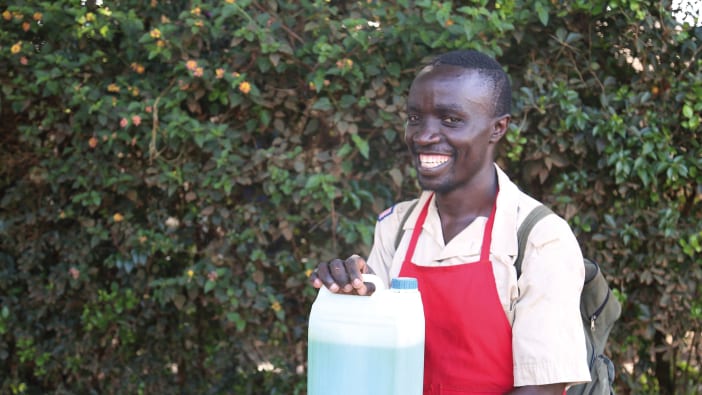by René Gayana Simbard.
The Pan-African Institute of Community Health (IPASC) in DR Congo has several departments including training, research, healthcare, mother and childcare and consultation.
Most of the communities where we work are poor and people often lack money for healthcare. In recent years we have noticed an increase in the number of people dying from common illnesses, which are easy to treat with medicines. We therefore investigated how we could make use of local plants with medicinal properties to reduce the costs of healthcare.
Practical emphasis
To take up this challenge, IPASC set up a research project for traditional medicine. IPASC has always included lessons on traditional medicine in their teaching but until recently it did not emphasise the practical aspects. It has taken nearly two years for this dream to become reality. IPASC aims to identify local plants with medicinal properties, to prepare drugs from them, to examine patients and, after consultation, provide them with treatment. As a result, we have used traditional medicines to treat malaria, typhoid, amoebic dysentery, intestinal worms, coughs, gastritis, ear infections, rheumatism, impotence and many other conditions. All the treatments are first tried and tested. (Of course, for more serious symptoms, we try to find the underlying cause if we can.)
We have worked closely with Anamed in South-Kivu, with CRMS (Multi- Disciplinary Research Centre for Development) at Bunia and the Plant Therapy Centre in Bunia, as well as with many traditional healers.
Some of the problems
We have found several difficulties:
- Some patients stop their treatment as soon as they feel a little better and we no longer see them at the centre. This makes it difficult to know how effective the treatment was.
- When a patient feels better, they often refuse to be examined or have their condition monitored by our laboratory.
- Patients are very reluctant to pay for herbal treatments even if we just ask for a very small sum.
René Gayana Simbard is the representative for traditional medicine at Nyankunde, IPASC, PO Box 21285, Nairobi, Kenya. E-mail: [email protected]








